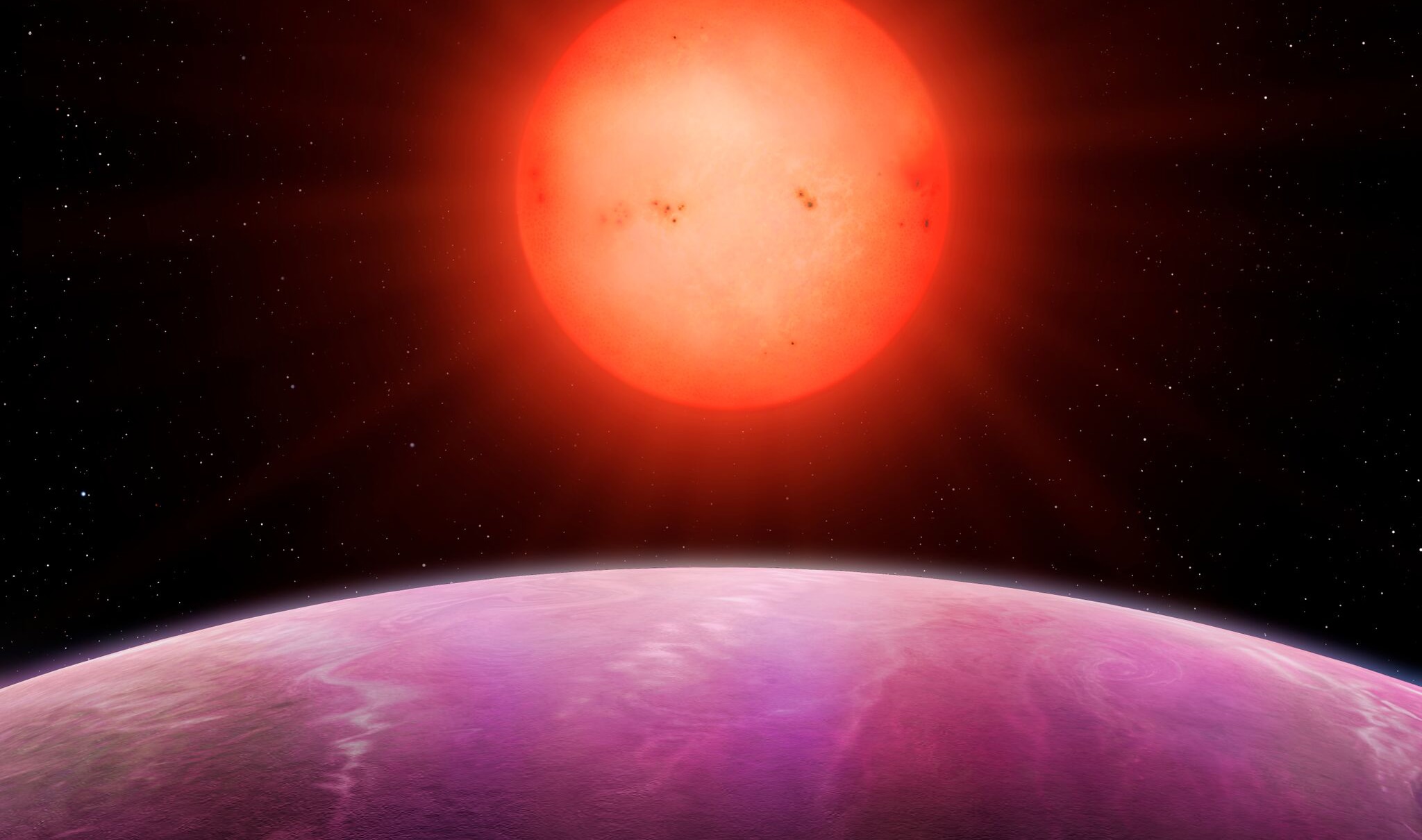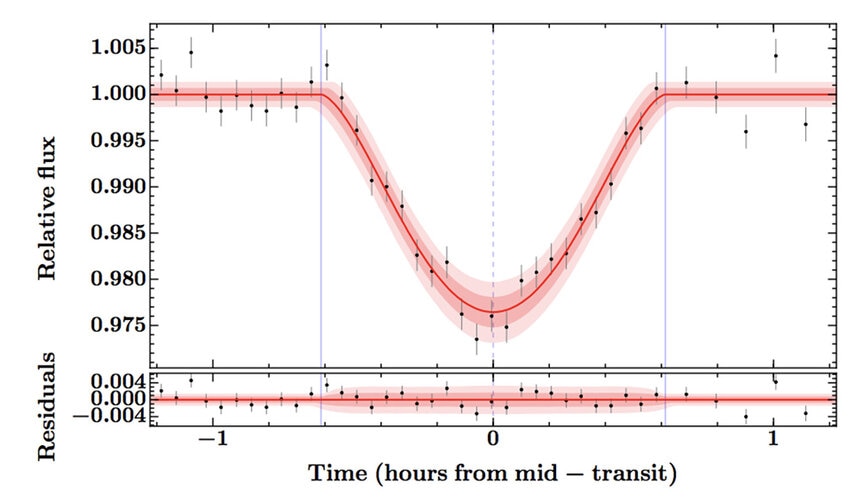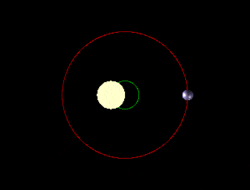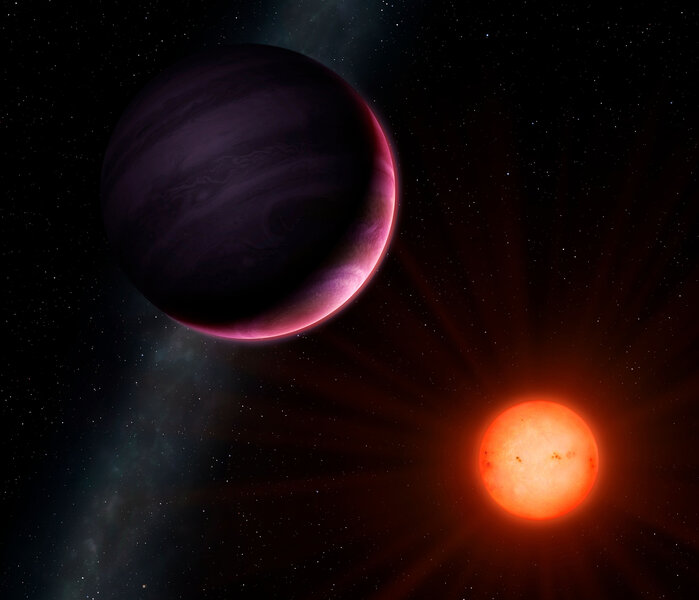Create a free profile to get unlimited access to exclusive videos, sweepstakes, and more!
Little star, big planet

One of the things I find very exciting about the search for exoplanets — alien worlds orbiting other stars — is that after 20 years of discovery, we’re now at the point where we’re finding ones that are a little bit weird, ones that challenge our ideas about how and where planets form.
The newest such world in this oddball (heh: literally) exoplanet menagerie is NGTS-1b, a gas giant orbiting a red dwarf star a little over 700 light-years away.
What makes this one special is that it’s rare: We know that smaller planets like Earth are common around these faint, cool, red stars, but gas giants like Jupiter and Saturn are apparently not nearly as common. Only two have been found before this one!
We expect them to be rare because low-mass red dwarf stars have less gravity than stars like the Sun, so there is likely to be less material around them when they’re young. Less material means smaller planets … which is what we see.
So far. The problem is these stars are faint, so they’re hard to monitor for planets. Even though these stars are the most common kind in the galaxy, they’re underrepresented in the exoplanet search. It’s entirely possible that our statistics for gas giants orbiting them are off. We need to observe a lot more.
That’s what the Next Generation Transit Survey is doing. It’s composed of — get this — a dozen 20-centimeter telescopes at the Paranal observatory in Chile. 20 cm is small! But the skies there are exceptional, and even such small ‘scopes can be used to look at lots of stars. The cameras they used are very sensitive in the red part of the spectrum, too, where red dwarfs are brighter.
The telescopes scan the sky looking for transiting exoplanets. If a planet’s orbit is seen more or less edge on, then once per orbit it blocks some of the star’s light, and we can measure that dip in brightness. A nifty thing about red dwarfs in this case is that they’re small, so a planet of a given size blocks more of its light than it would for a bigger star. That makes the dip deeper, and easier to detect.
In late 2016, over the course of about 100 clear nights, one of these ‘scopes made a lot of observations of the red dwarf in question: About 120,000 of them, each about 10 seconds long. It found a periodic dip in brightness consistent with an orbiting planet.
The astronomers followed up with a much larger 1.2-meter telescope and saw the transit dip clearly. The planet blocked about 2.5% of the star’s light with a period of about 2.65 day — that’s actually the planet’s year, how long it takes to orbit the star. That means it’s really close in! The transit is V-shaped, which means it’s a grazing transit: A full transit would have a flat bottom to the dip as the planet crosses the star’s face, but this one just gets deeper and the goes back up again. That’s what you expect if the planet just barely nicks the edge of the star.
That’s actually not too surprising. The planet, called NGTS-1b, is so big relative to the star that a grazing transit is more likely than for a bigger star. In fact, the planet is nearly a quarter the width of the star itself!
The planet is about 1.3 times bigger than Jupiter (with a somewhat large uncertainty; it might be 1-2 times Jupiter’s diameter), while the star is a mere 0.6 times the Sun’s diameter.
Happily, the mass of the planet was found as well. It orbits the star at a distance of less than 5 million kilometers (that’s super close; the Earth orbits the Sun at a distance of 150 million km). As it circles the star, the planet's gravity tugs on the star, and the star makes a smaller circle. This imposes a Doppler shift on the star’s light, making it alternately very slightly redder and bluer as it moves around the circle. That can be measured, and the planet’s mass derived from it (the more massive the planet, the harder it pulls on the star).
The planet’s mass is about 0.8 times Jupiter’s, making it a gas giant. It has a lower mass then Jupiter but is bigger most likely because it’s hot; at its distance from the star the cloud tops are probably at about 520°C (960° F). That makes it puffy.
I like this discovery. It’s NGTS’s first (hence the planet’s name), and an indicator there are more like it to be found. That’s important, because we just don’t have great statistics for these kinds of stars. For example, we know that stars with masses similar to the Sun and with heavier elements in them (farther along the periodic table than hydrogen and helium) have more gas giants, but we don’t know if that extends down to lower-mass stars. We also know that planets with masses between Earth and Neptune don’t seem to show any preference for what’s in their host stars; but again with lower-mass stars, who knows?
And the other, perhaps bigger, questions still remain: Why do some red dwarf stars have gas giant planets at all? Are some of our assumptions wrong? If so, which ones?
We need to examine lots more tiny stars, and NGTS is poised to do just that. So it’ll do very important scientific work, helping us understand how planets form. That’s one of the most fundamental questions in astronomy right now, and one we can answer a whole lot better than we could even a few years ago.
But my favorite part of all this is just how small the NGTS telescopes are! I have a 20 cm telescope myself, and it’s incredible to think that with such an instrument you can detect planets orbiting other stars!
Science! I love this stuff.
[Update (Nov. 1, 2017): The caption for the animation originally stated the more massive object makes a bigger circle; that has been fixed (you might need to refresh the page). Also, the paragraph near the end of this article about the "bigger questions" had been left off in the original version.]





























